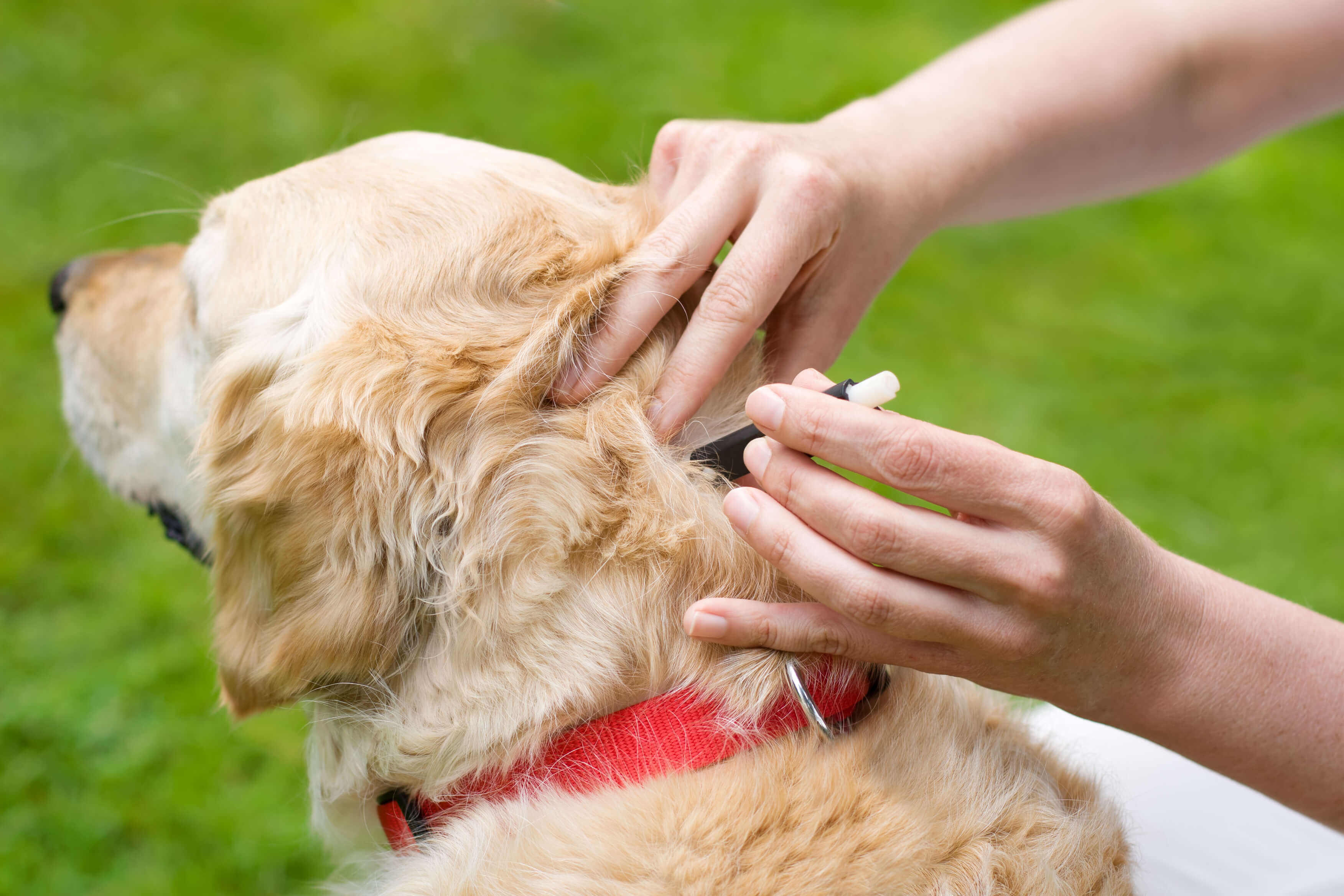
Keep Ticks from Ticking Off Your Pup!
Ticks cause a lot of trouble for dogs. They spread bacterial infections, and the symptoms may not show up for months. You probably won’t see these pests in the wild, but they’re waiting for the perfect opportunity to crawl onto your pup’s skin. Without the necessary precautions, a tick bite can progress into something much more serious.
Thankfully, it’s quite easy to keep ticks away from dogs. Preventive products and staying diligent outside can ward off ticks and their diseases. Here are the most common tick-borne illnesses and some tips for keeping Fido safe.
Diseases associated with tick bites
A number of tick-borne diseases can infect your dog. The most common one is Lyme disease, a bacterial infection that enters the body when an infected tick feeds on the animal’s blood. Lyme disease is hard to diagnose in dogs because symptoms may not show up for months. Possible symptoms include fever, lethargy, loss of appetite and joint swelling that lasts for three to five days at a time. Dogs should get tested for Lyme disease as soon as possible because untreated cases may progress to kidney failure.
Some ticks carry another bacterial infection called Rocky Mountain Spotted Fever (RMSF). When an infected tick latches onto a dog, bacteria from the tick bite travels through the bloodstream. RMSF produces vague symptoms that mimic other diseases. Symptoms include loss of appetite, joint pain, fever, nosebleeds and neurological problems. Severe cases may prove fatal, so consult a vet right away if you suspect a tick bite.
Pet parents should also watch out for Ehrlichiosis. This infection comes from a bacterial strain called Ehrlichia canis that’s transmitted via tick bites. During the first two to four weeks, the dog may experience a fever, swollen lymph nodes, difficulty breathing and bleeding disorders. If left untreated, Ehrlichiosis will progress to the sub-clinical stage, which means the bacteria will continue to harm the dog without any visible symptoms. Failure to diagnose Ehrlichiosis will eventually lead to life-threatening anemia.

How to keep ticks off your pup
Prevention is the best medicine against tick-borne diseases. Pups have the lowest risk of becoming ill when you can prevent tick bites in the first place. Here are the most effective ways to stop ticks from hitching a ride on your pooch.
- Apply a flea and tick treatment: Ticks are a year-round threat, so make a flea and tick treatment part of your dog’s parasite prevention routine. These treatments are available in the form of collars, shampoos, pills and topical ointments. Pet parents should administer flea and tick medication once a month. If you have multiple dogs, apply the treatment to all of them at the same time to avoid transmitting any tick-borne diseases.
- Spray a dog-friendly repellent: In addition to a flea and tick treatment, spritz your pup with an insect repellent before heading into wooded areas. Repellents are very effective against ticks and discourage them from latching onto your dog. Use insect repellents designed for dogs only, since human products contain toxic chemicals a dog may lick off their coat.
- Walk on marked trails: Dogs are more likely to encounter ticks when they romp through bushes and tall grass. Keep your pup on a leash and stick to designated paths where the vegetation is kept under control. Letting your pup roam free isn’t worth coming home with a tick!
- Trim bushes and mow the lawn: Pet parents fall into the trap of thinking dogs can only get tick bites in the woods. You can find ticks anywhere with tall grass, including your own back yard. Keep the grass very short and trim overgrown bushes. Ticks wait on the tips of branches and tall grass, so tidying up the yard gives them fewer places to ambush an unsuspecting pup.
- Check your dog for ticks: Even if you apply a repellent and preventive treatment, persistent ticks will find a way to bite your pup. When your dog comes inside, check their body for strange bumps that indicate a tick is present. Key areas to check include the eyes, ears, feet, anus, tail, legs and under the collar. If you find a tick, grab its head with a pair of pointed tweezers (wear gloves), then slowly pull straight upwards. Be careful not to let the head stay embedded in the skin!
Ticks are sneaky critters, and their illnesses are even harder to detect. Save your pup the discomfort by deterring ticks before they transmit a potentially life-threatening infection. Not all diseases present symptoms, so preventing tick bites is the most effective way to protect your canine friend.


